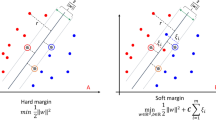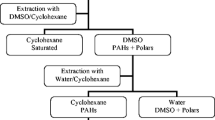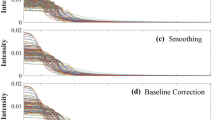Abstract
This study introduces a suite of robust models aimed to advance the determination of physiochemical properties in heavy oil refinery fractions. By integrating real-time analytical technique inside the refinery analysis, we have developed a single analyzer capable of employing six partial least square regression equations. These designed models enable to provide real-time prediction of critical petroleum properties, such as sulfur content, micro carbon residues (MCR), asphaltene content, heating value, and the concentrations of nickel and vanadium metals. Specifically tailored for heavy oil in refinery feeds with an American petroleum institute (API) gravity range of 3° to 32° and sulfur content of 2.8 to 5.5 wt%, the models streamline the analysis process within refinery operations, bridging the gap between catalytic and non-catalytic processes across refinery units. The accuracy of our physiochemical prediction models has been validated against American Society for Testing and Materials (ASTM) standards, demonstrating their capability to deliver precise real-time property values. This approach not only enhances the efficiency of refinery analysis but also sets a new standard for the monitoring and optimization of heavy oil processing in real-time approach.
Graphical abstract





Similar content being viewed by others
Data availability
Data will be made available on request.
References
F. Sánchez-Minero, G. Sánchez-Reyna, J. Ancheyta, G. Marroquin, Fuel (2014). https://doi.org/10.1016/j.fuel.2014.08.022
O. Alomair, A. Elsharkawy, H. Alkandari, SPE (2011). https://doi.org/10.2118/150503-MS
A. Hinkle, E.-J. Shin, M.W. Liberatore, A.M. Herring, M. Batzle, Fuel (2008). https://doi.org/10.1016/j.fuel.2008.04.018
R. Kumar, S. Maheshwari, R.K. Voolapalli, S. Upadhyayula, J. Taiwan Inst. Chem. Eng. (2021). https://doi.org/10.1016/j.jtice.2021.03.012
M.K. Moro, F.D. dos Santos, G.S. Folli, W. Romão, P.R. Filgueiras, Fuel (2021). https://doi.org/10.1016/j.fuel.2021.121283
P. de Peinder, T. Visser, R. Wagemans, J. Blomberg, H. Chaabani, F. Soulimani, B.M. Weckhuysen, Energy Fuels (2010). https://doi.org/10.1021/ef900908p
L. Riveros, B. Jaimes, M.A. Ranaudo, J. Castillo, J. Chirinos, Energy Fuels (2006). https://doi.org/10.1021/ef0501243
Y. Lei, P. Yu, W. Ni, H. Peng, Y. Liu, X. Lv, H. Zhao, ACS Omega (2021). https://doi.org/10.1021/acsomega.0c05121
E.F. Ghloum, A.M. Rashed, M.A. Safa, R.C. Sablit, S.M. Al-Jouhar, J. Petrol. Sci. Eng. (2019). https://doi.org/10.1016/j.petrol.2018.12.071
K. Chen, Z. Wang, H. Liu, A. Guo, Fuel Process. Technol. (2012). https://doi.org/10.1016/j.fuproc.2012.02.004
M.A. Khoshooei, S.M. Elahi, L. Carbognani, C.E. Scott, P. Pereira-Almao, Fuel (2021). https://doi.org/10.1016/j.fuel.2020.119664
Y.S. Zhang, X. Lu, R.E. Owen, G. Manos, R. Xu, F.R. Wang, W.C. Maskell, P.R. Shearing, D.J. Brett, Appl. Catal. B (2020). https://doi.org/10.1016/j.apcatb.2019.118329
J.S. Pereira, D.P. Moraes, F.G. Antes, L.O. Diehl, M.F. Santos, R.C. Guimarães, T.C. Fonseca, V.L. Dressler, É.M. Flores, Microchem. J. (2010). https://doi.org/10.1016/j.microc.2009.12.016
A. Doyle, A. Saavedra, M.L.B. Tristao, R.Q. Aucelio, Fuel (2015). https://doi.org/10.1016/j.fuel.2015.08.072
F.A. Dawodu, C.J. Abonyi, K.G. Akpomie, Appl Water Sci (2021). https://doi.org/10.1007/s13201-020-01335-8
P.R. Filgueiras, C.M. Sad, A.R. Loureiro, M.F. Santos, E.V. Castro, J.C. Dias, R.J. Poppi, Fuel (2014). https://doi.org/10.1016/j.fuel.2013.07.122
A. Demirbas, K. Al-Ghamdi, Pet. Sci. Technol. (2015). https://doi.org/10.1080/10916466.2015.1007384
N.T. Nguyen, S. Park, J. Jung, J. Cho, C.W. Lee, Y.-K. Park, J. Ind. Eng. Chem. (2018). https://doi.org/10.1016/j.jiec.2017.11.044
C.A. Teixeira, A.M. de Oliveira, I.M. Junior, L.W. Hantao, Fuel (2024). https://doi.org/10.1016/j.fuel.2023.130156
E. Marguí, M. Resano, I. Queralt, Spectrochim. Acta, Part B (2019). https://doi.org/10.1016/j.sab.2019.04.003
A. Muhammad, R.B. de Vasconcellos Azeredo, Fuel (2014). https://doi.org/10.1016/j.fuel.2014.04.026
Acknowledgements
The authors would like to acknowledge the effort of Emad A. Alawi from R&DC for petroleum analysis.
Author information
Authors and Affiliations
Corresponding author
Ethics declarations
Conflict of interest
The authors declare that they have no known competing financial interests or personal relationships that could have appeared to influence the work reported in this paper.
Rights and permissions
Springer Nature or its licensor (e.g. a society or other partner) holds exclusive rights to this article under a publishing agreement with the author(s) or other rightsholder(s); author self-archiving of the accepted manuscript version of this article is solely governed by the terms of such publishing agreement and applicable law.
About this article
Cite this article
Al-Shafei, E., Aljishi, A., Albahar, M. et al. Enhancing refinery heavy oil fractions analytical performance through real-time predicative modeling. ANAL. SCI. (2024). https://doi.org/10.1007/s44211-024-00625-4
Received:
Accepted:
Published:
DOI: https://doi.org/10.1007/s44211-024-00625-4




